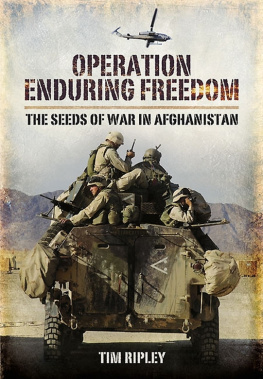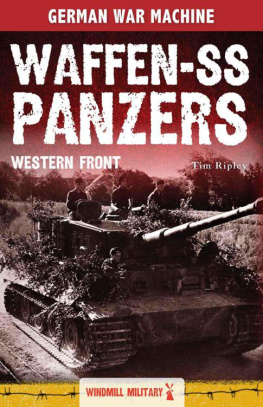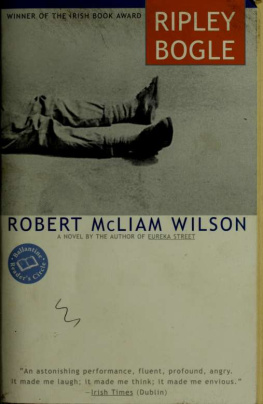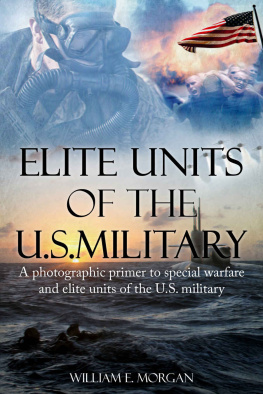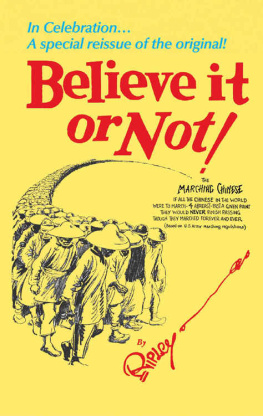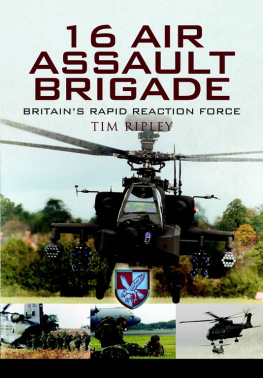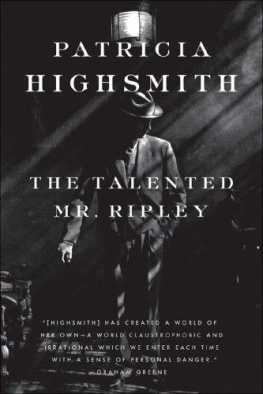Tim Ripley - Elite Units of the Third Reich (Classic Texts)
Here you can read online Tim Ripley - Elite Units of the Third Reich (Classic Texts) full text of the book (entire story) in english for free. Download pdf and epub, get meaning, cover and reviews about this ebook. year: 2015, publisher: German War Machine, genre: History. Description of the work, (preface) as well as reviews are available. Best literature library LitArk.com created for fans of good reading and offers a wide selection of genres:
Romance novel
Science fiction
Adventure
Detective
Science
History
Home and family
Prose
Art
Politics
Computer
Non-fiction
Religion
Business
Children
Humor
Choose a favorite category and find really read worthwhile books. Enjoy immersion in the world of imagination, feel the emotions of the characters or learn something new for yourself, make an fascinating discovery.

- Book:Elite Units of the Third Reich (Classic Texts)
- Author:
- Publisher:German War Machine
- Genre:
- Year:2015
- Rating:5 / 5
- Favourites:Add to favourites
- Your mark:
- 100
- 1
- 2
- 3
- 4
- 5
Elite Units of the Third Reich (Classic Texts): summary, description and annotation
We offer to read an annotation, description, summary or preface (depends on what the author of the book "Elite Units of the Third Reich (Classic Texts)" wrote himself). If you haven't found the necessary information about the book — write in the comments, we will try to find it.
Tim Ripley: author's other books
Who wrote Elite Units of the Third Reich (Classic Texts)? Find out the surname, the name of the author of the book and a list of all author's works by series.
Elite Units of the Third Reich (Classic Texts) — read online for free the complete book (whole text) full work
Below is the text of the book, divided by pages. System saving the place of the last page read, allows you to conveniently read the book "Elite Units of the Third Reich (Classic Texts)" online for free, without having to search again every time where you left off. Put a bookmark, and you can go to the page where you finished reading at any time.
Font size:
Interval:
Bookmark:
Each chapter of this book opens with a high-quality contemporary photograph. Click or tap on the photograph to see a detailed caption, then click or tap on the 'return' link to go back to the chapter. If your e-reader does not allow internal links, the caption pages can usually be found at the very end of the book, beyond the imprint page.
The maps used in this book are high-resolution images, so on reading systems where zooming is supported it should be possible to examine them in detail by clicking or double-tapping on them. We cannot guarantee easy readability on older readers or readers with relatively low-resolution screens, however. If you are unable to examine the maps in detail, high quality versions, along with other additional content, can be found at www.germanwarmachine.com
At the height of the Third Reich in the autumn of 1942, Adolf Hitlers armies had advanced to the banks of the River Volga, were pushing towards Cairo, dominated the Balkans and occupied western Europe from the Pyrenees to the Arctic, while German submarines were sinking ships off Americas Atlantic Coast. Within three years the Fhrers Thousand Year Reich was in ruins: Soviet troops were raising the Red Flag above the rubble of Berlin before linking up with Allied troops advancing from the Rhine.
Hitlers first reaction to the string of defeats after the failure of the German Army to take Moscow in the winter of 1941 was to begin to form special, ultra-loyal elite units to reinvigorate his flagging armies. The Fhrer was convinced his generals lacked the necessary will to fight the total war, so he turned to the Waffen-SS and a small number of hand-picked army units to fight to the death. They lived up to their Fhrers faith and fought with fanaticism, in the face of massive odds.
At the same time, Hitler was convinced that Germanys scientists and engineers could provide him with the answer to his problems and win the war. Special units were formed to take these weapons into battle, with the best pilots, missile experts, tank crews and submariners grouped together in elite units. They were the Third Reichs technical elite, and were some of the first warriors in military history to rely on science rather than simply martial prowess to defeat their enemies.
Whenever Allied or Soviet soldiers met their German opponents in battle, they found them determined, skillful and deadly opponents. In the deserts of North Africa, the skies of Europe, on the Russian steppe, out in the stormy Atlantic, Italys mountains or the hedgerows of Normandy, Germanys warriors always put up a hell of a fight.
Many of Nazi Germanys elite units earned themselves legendary status for their martial prowess. Units like the Waffen-SS Leibstandarte Adolf Hitler Panzer Division, Waffen-SS foreign legions or Admiral Karl Dnitzs U-boat fleet showed amazing battlefield bravery in the face of overwhelming odds. Their losses were staggering, yet time after time they returned to the fight, even when they knew the war was lost.
Some of Hitlers top units, such as the Grossdeutschland Division, were successful in battle due to the sheer professionalism of their soldiers and the efficient organization and effective leadership of their officers. These were men who took soldiering very seriously. Kurt Students paratroopers and Erwin Rommels 7th Panzer Division were not only professional outfits, but pioneered new forms of warfare airborne and armoured. They revolutionized war with their trailblazing Blitzkrieg tactics that conquered Europe for Hitler.
Other Nazi units took on elite status because they were equipped with the best and most advanced hardware available. Units with Tiger tanks or 88mm flak guns were considered battle-winning weapons and always led the attack or formed the bulwark of a defensive position. They had to used in battle by the best men available. Hitler believed passionately that so-called wonder weapons could win Germany the war. He took this to the extreme when he pumped men and materiel into the Vengeance Weapon programme. In doing so he created a new elite of techno-warriors.
As Hitlers Third Reich fell apart under the relentless pressure of Allied attacks, a new breed of elite unit came to the fore those formed around charismatic, dashing and ruthless leaders. Men like Otto Skorzeny, Hans-Ulrich Rudel and Adolf Galland led units that will be forever identified with their names. These men were all personal favourites of Hitler. As the Fhrer became ever more disillusioned with the armys generals who brought him nothing but defeat after defeat, these men only provided him with good news. He showered them with medals, publicity and let them indulge their every whim. On the battlefield they were fearless, determined and skillful leaders.
The prowess of the German armed forces was not due to one single factor but a number of them. Hitler enjoyed the benefit of inheriting the highly professional German officer corps when he seized power in 1933. Germanys General Staff Corps was at the heart of the countrys rearmament programme during the 1930s, and it moulded the expanded Wehrmacht into a highly professional organization. Officers, noncommissioned officers (NCOs) and soldiers were all trained to a very high standard, which meant German units went into battle prepared for every eventuality. This became increasing important as the war turned against Hitler and outnumbered German units had to stage determined rearguard actions against overwhelming odds.
For its time, Hitlers Wehrmacht was very advanced. It was keen to adopt the latest technology and management procedures, giving it a vital edge over its more pedestrian opponents. The Germans, for example, were quick to field Blitzkrieg tactics based on the aggressive use of tanks, paratroopers, close air support and huge fleets of motor vehicles. At the same time the Germans took quickly to using radios to command and control all their operations, which meant they could be conducted at a pace and tempo previously unknown in military history.
Germanys advanced industrial base meant that the Fhrer was able to provide his fighting men with weapons that were generally far superior to those available to their opponents. Weapon for weapon, the products of the Messerschmitt, Henschel, Krupp and Heinkel companies were more than a match for the anything the British, French, Russians or Americans could produce. The Tiger tank, 88mm flak gun and Me 262 jet fighter have all entered military history as classic weapons. The high quality of these weapons, however, turned into the Third Reichs Achilles heel because the quest to produce superior weapons meant they were far more expensive and difficult to produce than those of the Soviets or Allies. In the end, Germanys enemies proved able to out-produce her and massed overwhelming force on the battlefields of Europe.
Hitler was fortunate to rule one of the best educated countries in Europe. The manpower the Fhrers generals had to work with was far superior to that available to their opponents. While every German soldier was literate and most officers were university graduates, the Soviet Red Army had little more than illiterate peasants to draw on. As a result, German soldiers were not dependent on their senior officers and could keep fighting if they found themselves leaderless. The Germans taught their officers and soldiers to fight according to the principles of mission command, so if a commander was killed his second-in-command could take over and still complete the mission. Commanders were given objectives to be achieved and left to complete their task, rather than being given specific instructions on how to do the job.
Font size:
Interval:
Bookmark:
Similar books «Elite Units of the Third Reich (Classic Texts)»
Look at similar books to Elite Units of the Third Reich (Classic Texts). We have selected literature similar in name and meaning in the hope of providing readers with more options to find new, interesting, not yet read works.
Discussion, reviews of the book Elite Units of the Third Reich (Classic Texts) and just readers' own opinions. Leave your comments, write what you think about the work, its meaning or the main characters. Specify what exactly you liked and what you didn't like, and why you think so.

